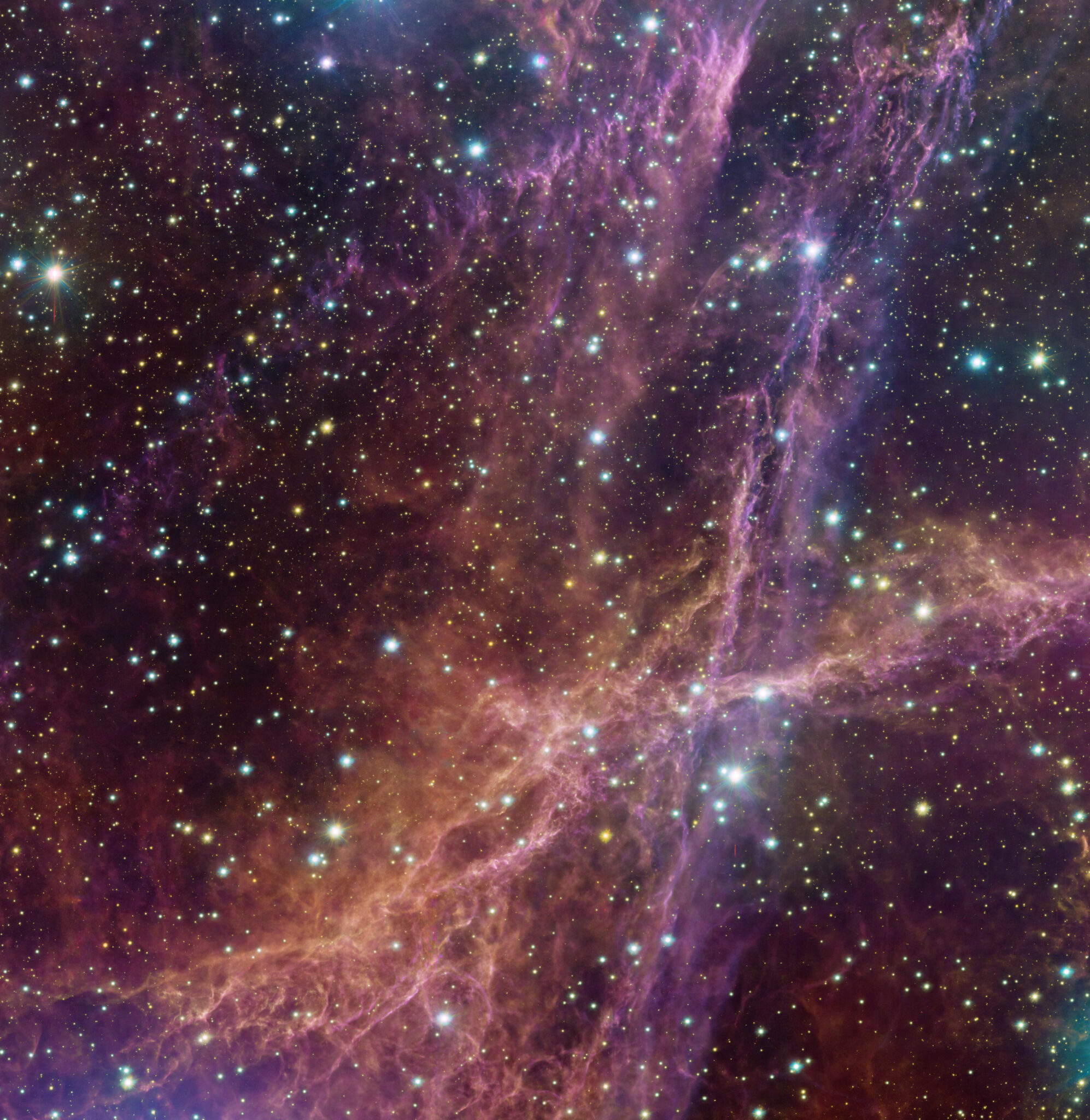Employees of the European Southern Observatory have published an image obtained by the VLT Survey Telescope (VST). It shows multicolored filamentary structures in the constellation Vela. This is about all that’s left of the giant star.

In the past, a massive star existed in this region. But over time, it exhausted its thermonuclear fuel, leading to the collapse of its core, accompanied by a colossal explosion. The light from its explosion reached Earth about 11,000 years ago. According to scientists, the supernova shone so brightly that it was visible even in the daytime sky.
When the star exploded, its outer layers were ejected into the surrounding gas medium. Shock waves passed through them, compressing the substance and creating complex fibrous structures. The energy released during this process, heated up the gas strands, making them shine brightly, as the photo demonstrates.
From the dead star itself, there remained a superdense ball with a diameter of only a few tens of kilometers, in which protons and electrons stuck together to form neutrons. Such objects are called neutron stars.
This photo is just a small fragment of a much larger image taken with the OmegaCAM instrument installed on the VST. Located just 800 light-years from Earth, the supernova remnant in the constellation Vela is one of the closest examples of such dramatic events. That’s why astronomers use it as a natural laboratory. By studying this object in great detail, they try to understand what happens when massive stars end their lives in such a spectacular way.
Earlier we told you about how the James Webb telescope discovered the most distant supernova in the Universe.
According to ESO


